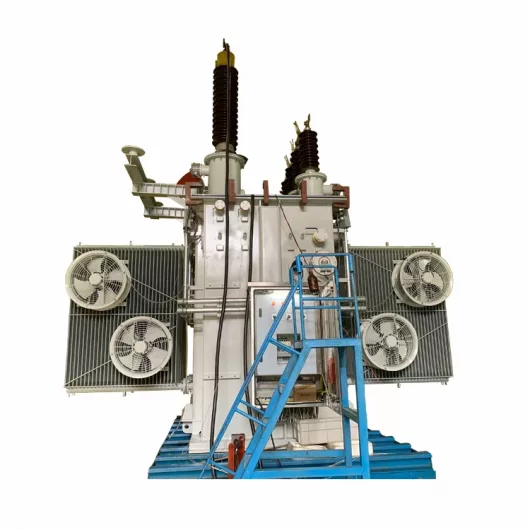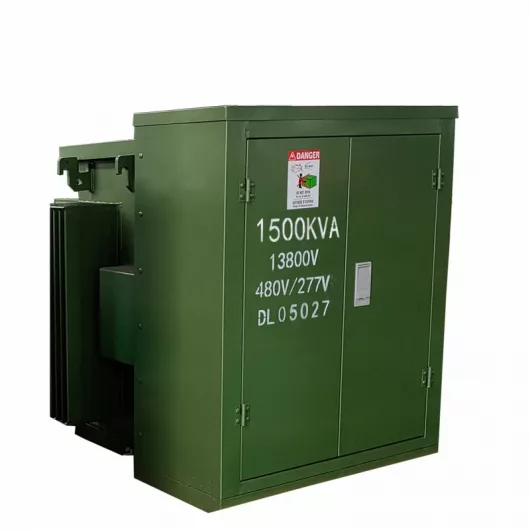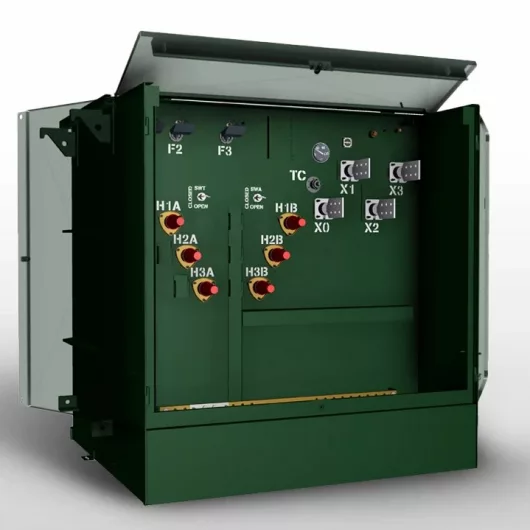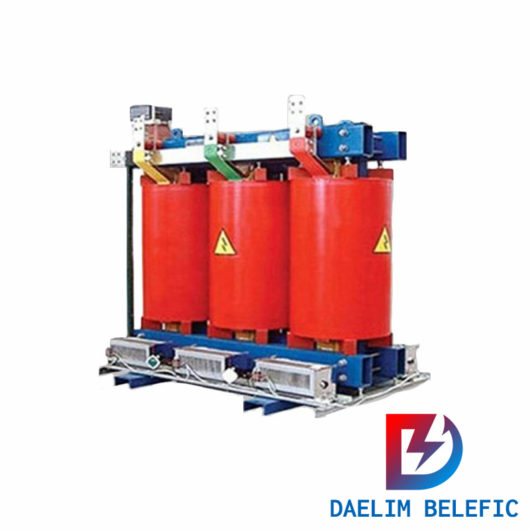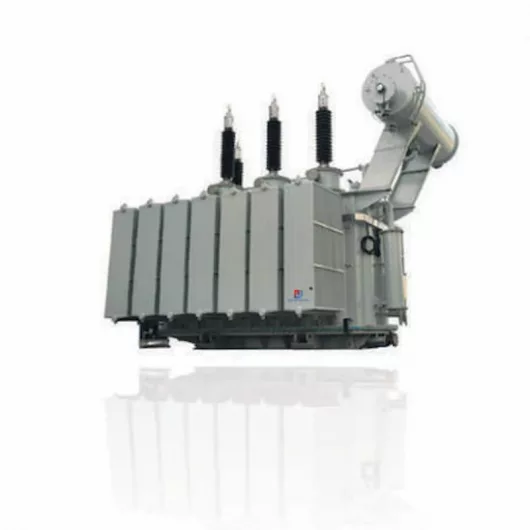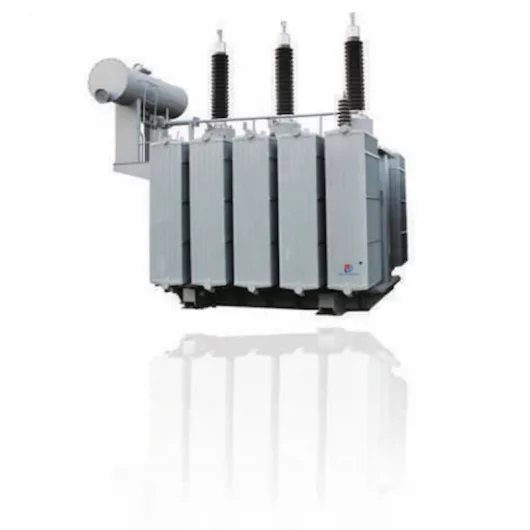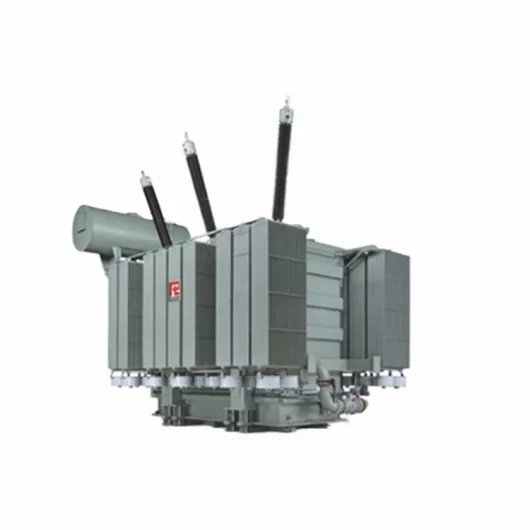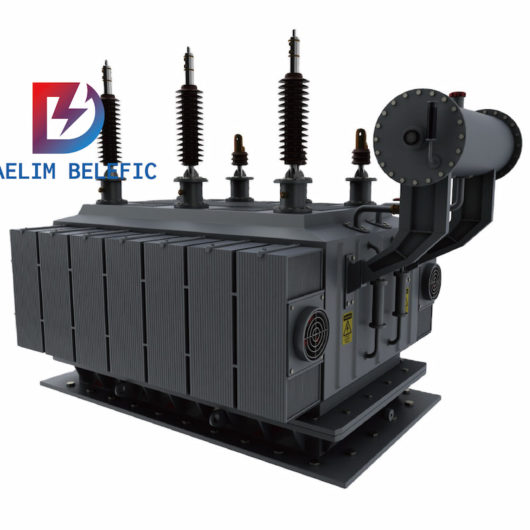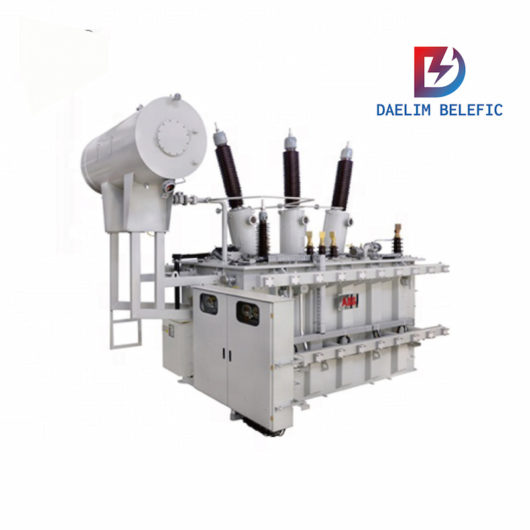
How to Choose Pad Mounted Transformer?
Table of Contents Selecting the right pad-mounted transformer requires careful consideration of several critical factors, as these ground-mounted distribution transformers play a vital role in
ELECTRIC, WITH AN EDGE
As we all know, in the design of hydropower station, the hydro transformer should generally choose a step-up transformer, that is, the voltage of the boosted voltage side is 10% higher than the rated voltage of the voltage level.
Such as 110kv hydro transformer, 35kV transformer should be 121kV, 38.5kV, etc., the purpose is to make the sending terminal voltage of the hydropower station balance with the system receiving terminal voltage after the loss of the line voltage, so as to ensure that the generator set operates at the rated voltage.
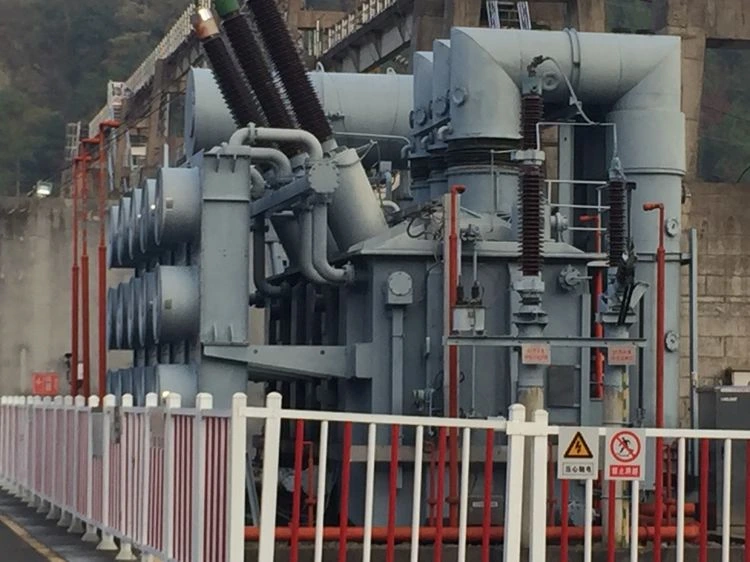
However, there is no formal step-up transformer in the 10kV voltage level hydro transformer stereotyped products, but only distribution hydro transformer with a voltage of 10±5% kV.
This step-up transformer is used in rural small hydropower stations.
Especially the hydropower station with long transmission distance and large line voltage loss. However, the use of such a step-up transformer often causes the problem of excessively high output voltage and insufficient reactive power at the generator outlet.
Therefore it is unreasonable.
According to this situation, Daelim’s designer specially designed a 11±5% kV step-up transformer to solve this problem well.
At the same time, Daelim also has a professional installation team in North America, which can provide you with professional after-sales service.
Daelim’s hydro transformer have obtained IEEE, CSA, ANSI, DOE, IEC and other certifications, as well as a number of patented inventions, which can ensure the quality of the hydro transformers you purchase and provide you with high-quality products.
Small hydropower stations are the most suitable for the selection of step-up transformers.
The following author will explain the reasons for choosing a step-up hydro transformer from two aspects.
This method of operation is relatively common.
Its operating characteristics are: the load distribution is far and scattered, the load time is relatively concentrated and varies greatly, when the power station supplies power, there is no other power supply on the network, and the voltage of the entire network is controlled by the machine terminal.
Part of the 400V power generated by the generator is directly supplied to nearby users, and part of it is boosted by a 10000/400V hydro transformer for long-distance transmission.
It is then stepped down by a hydro transformer of the same level and supplied to remote users.
It is obvious that the voltage that meets the requirements cannot be obtained after several losses and line losses.
Due to the limited range of the transformer no-load adjustment switch. If the user voltage is to meet the requirements, it can only be satisfied by increasing the speed of the unit and increasing the excitation current, which artificially increases the terminal voltage of the unit and makes the unit run in a state of over-rated voltage.
This will cause the temperature of the unit to rise, accelerate the aging of the transformer, and seriously affect the life of the generator.
The operating characteristics are: the load is relatively stable, the inrush current of the large load is borne by the power grid, and the small hydropower station can only obey the power grid to transmit a certain amount of electric energy.
When operating on the Internet, the grid connection point is in a hydropower station, and when the voltage sent from the network at the front end of the grid connection point is higher than the rated voltage of the generator, in order to achieve synchronization, the generator voltage will also increase, artificially increasing the generator no-load. Excitation current, and has a great impact on the measurement and assessment of reactive power during operation (under-generating reactive power is often subject to economic penalties).
When the unit is running at full load, if the entire load on the network decreases (low, flat valley period), the grid voltage and frequency will increase, and the machine terminal voltage will increase accordingly. If the excitation is not increased, the reactive power will be insufficient;
If the excitation is increased, the excitation current of the generator will exceed the rated excitation current, and the unit will run in the state of over-rated voltage for a long time, and the result is the same as the above.
To sum up, the hydro transformer used for step-up in the hydropower station should be carefully selected in the design. If you cannot choose a step-down transformer, you must choose a step-up hydro transformer according to the technical requirements, so as to avoid the economic loss caused by the premature aging of the unit and the lack of reactive power.
As shown in the figure, when the 10kV busbar voltage of the substation is UB, the output voltage of the hydropower station is US=UB+△U, where the line voltage loss is △U=F(PR+QX)/U.
In order to ensure the user’s voltage level, the operating voltage of the 10kV bus in the substation is generally 10.5kV. When the line voltage loss is 10%, the outgoing line voltage of the hydropower station is US= (1+ 10%) × 10.5= 11.55 (kV).
At this time, if the distribution hydro transformer is selected for the hydropower station, and the tap is adjusted to +5%, the generator terminal voltage will also reach UF=(11.5/10.5)UN=1.1UN.
This means that the generator will run at 1.1 times the rated voltage for a long time, which will accelerate the aging of the generator insulation and shorten the service life of the unit.
At the same time, if the generator runs over the rated voltage, the excitation current of the generator will decrease, and the reactive power output will decrease.
Therefore, the hydropower station that chooses the distribution hydro transformer often can only generate reactive power, and the economic benefits of the power station will also be affected.
If you choose a step-up transformer of 11±5%, the above problems will not exist. An example is as follows:
The installed capacity of a hydropower station is 3 × 500kW, the generator voltage is 400V, the length of the 10kV interconnection line from the power station to the county network 35kV substation is 10km, and the wire type is LGJ-95. The operating voltage of the 10kV bus in the substation is 10.5kV.
After calculation, the voltage loss on the grid-connected line of the power station is △ U = 950V, and the voltage on the boosted voltage side of the power station is 10.5+0.95=11.45kV.
Daelim’s designers selected a (11±5%)/0.4kv step-up transformer, the tap was adjusted to +5%, and the generator outlet voltage was UF= 0.4×11.45/11.55= 0.397kV.
This voltage is undoubtedly suitable for a generator with a rated voltage of 400V.
And the price of this hydro transformer is also comparable to that of ordinary 10kV distribution transformers.
If the distribution transformer of 10+5%kV is selected, when the tap is adjusted to ±5%, the generator outlet voltage is UF= 0.4×11.4510.5= 0.44kV, which exceeds the rated voltage of the generator by 10%.
After nearly 10 years of operation, it has been proved that the step-up hydro transformer used in this hydropower station is very effective. It solves the problem of long-term overvoltage and insufficient reactive power of generators that existed in similar power stations before.
To sum up, the selection of 11kV step-up hydro transformers in rural small hydropower stations is of great significance for ensuring the operating voltage level of generators and solving the problem of insufficient reactive power in small hydropower stations.
If you need a transformer for a small hydropower station, it is recommended that you purchase Daelim’s 11KV step-up transformer.
You can also contact us, our hydro transformer factory with more than 16 years of design and production experience will provide you with the most professional solutions.
For the original situation of serious overvoltage or serious shortage of reactive power output in the hydropower station due to the selection of 10kV distribution transformer, it is recommended to transform or replace the original distribution transformer with a step-up transformer.

Table of Contents Selecting the right pad-mounted transformer requires careful consideration of several critical factors, as these ground-mounted distribution transformers play a vital role in

Table of Contents The primary function of the pad mounted transformer is to serve as a critical distribution transformer that steps down higher primary voltage

On this page A pad mounted transformer operates through electromagnetic induction, serving as a crucial distribution component that converts high voltage electricity to lower, usable

When looking for the best pad-mounted transformer manufacturer, it’s important to find industry leaders known for reliability and innovative solutions. Pad-mounted transformers are essential in


